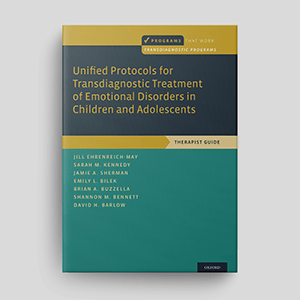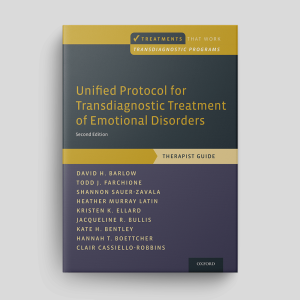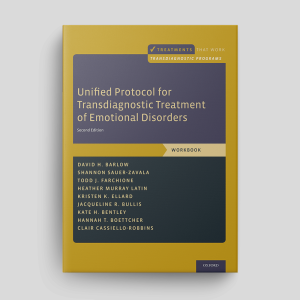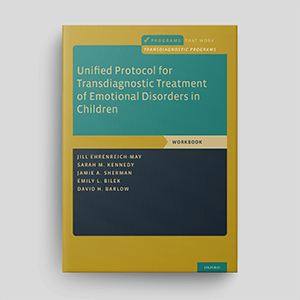Unified Protocol For Transdiagnostic Treatment Of Emotional Disorders In Adolescents: Workbook
The Unified Protocol For Transdiagnostic Treatment Of Emotional Disorders In Adolescents (UP-A) is a structured workbook designed to help adolescents overcome a wide array of emotional disorders.
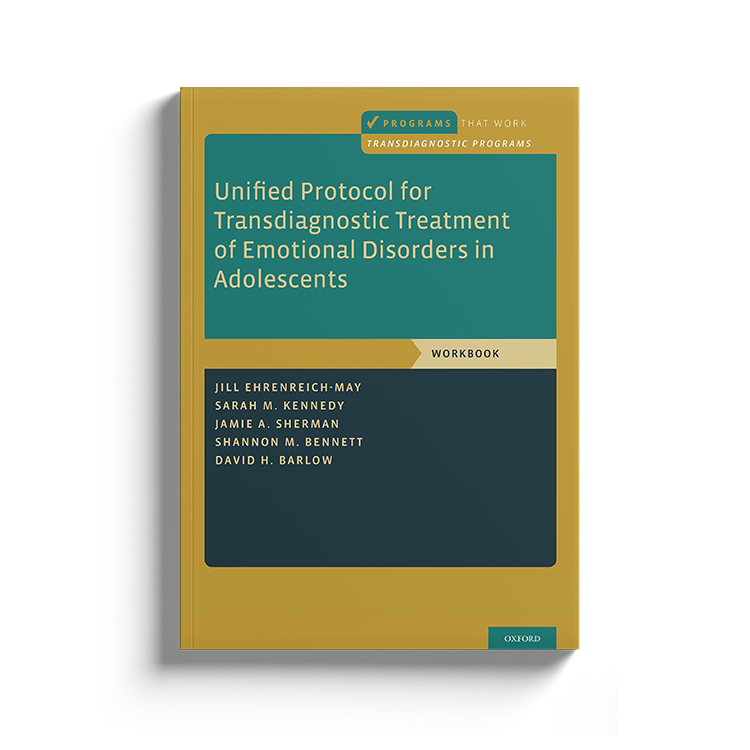
Download or send
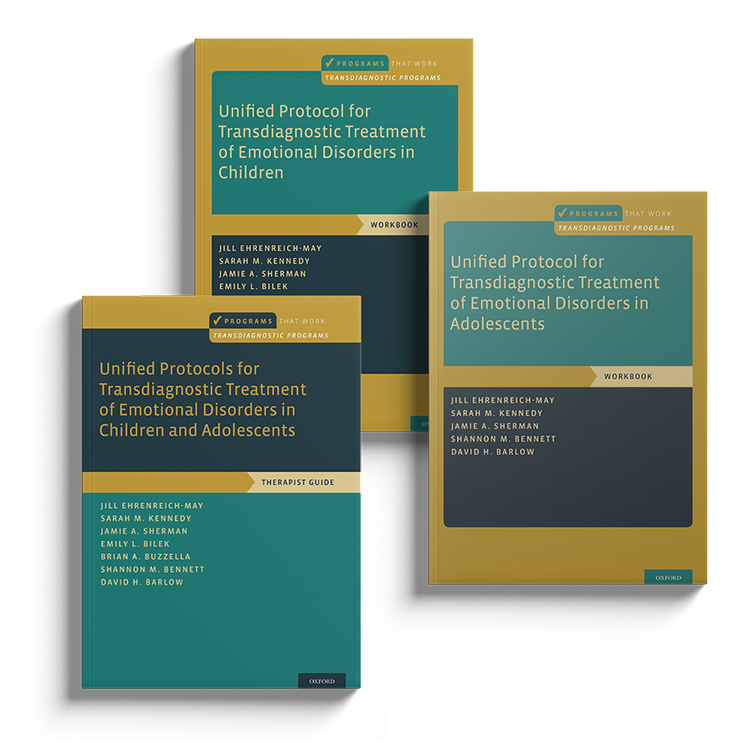
Overview
Unified Protocol For Transdiagnostic Treatment Of Emotional Disorders In Children And Adolescents provides mental health professionals with a flexible, transdiagnostic framework for treating emotional disorders in young clients. Building on the principles established in the adult Unified Protocol (UP), this program addresses the wide array of emotional disorders often seen in children and adolescents, including anxiety, depression, trauma, somatic symptom disorders, and obsessive compulsive disorders. By emphasizing common elements across these disorders—such as intense negative emotions, avoidance behaviors, and a propensity toward distress—this protocol equips therapists to treat not only individual diagnoses but also the underlying vulnerabilities that contribute to multiple or co-occurring conditions.
The Unified Protocol for Transdiagnostic Treatment of Emotional Disorders in Children and Adolescents comes in three volumes. This page is for the workbook for adolescents (UP-A).
Why use this resource?
This workbook provides a structured, accessible program for adolescents struggling with emotional disorders, written by experts.
- Explains what maintains common emotional disorders.
- Describes effective interventions for overcoming these issues.
- Broken into a series of accessible chapters for clients.
- Authored by world-leading experts in the field.
- Accompanied by a dedicated therapist guide.
Key benefits
Structured
Educational
Evidence-Based
Flexibile
Trusted
Who is this for?
Anxiety Disorders
Persistent fears and worries.
Depression
Low mood, withdrawal, and loss of interest.
Trauma
Distress related to traumatic experiences.
Emotion Dysregulation
Difficulty managing intense emotional responses.
Mixed Anxiety And Depression
Co-occurring symptoms of anxiety and low mood.
Integrating it into your practice
Assessment
Explore how adolescents experience their mental health difficulties.
Psychoeducation
Teach clients about emotional processes that maintain symptoms across disorders.
Skills
Implement effective cognitive-behavioral interventions to address key symptoms.
Monitoring
Use structured worksheets to track progress and refine interventions.
Relapse Prevention
Equip clients with long-term strategies for maintaining their progress.
Theoretical background and therapist guidance
The Unified Protocol For Transdiagnostic Treatment Of Emotional Disorders In Adolescents: Workbook provides mental health professionals with a flexible, transdiagnostic framework for treating emotional disorders in young clients. Building on the principles established in the adult unified protocol, this guide addresses the wide array of emotional disorders often seen in children and adolescents, including anxiety, depression, trauma, somatic symptom disorders, and obsessive-compulsive disorders. By emphasizing common elements across these disorders - such as intense negative emotions, avoidance behaviors, and a propensity toward distress - this protocol equips therapists to treat not only individual diagnoses but also the underlying vulnerabilities that contribute to multiple or co-occurring conditions.
Core features of the unified protocols for youth include:
- Broad applicability. The unified protocols for children (UP-C) and adolescents (UP-A) are designed to be versatile, making them suitable for children and adolescents with various emotional disorders, such as generalized anxiety disorder, social anxiety, panic disorder, depression, and more.
- Modular structure. The protocols are divided into eight core modules, allowing therapists to tailor treatment based on individual client needs and presenting issues. Modules can be applied sequentially or, after initial familiarity, adjusted as needed to target specific areas.
- Focus on emotional awareness and regulation. Techniques in each module aim to increase clients’ emotional awareness, allowing young clients to face their intense emotions with less avoidance and distress over time.
- Parent involvement. Recognizing that parenting styles can reinforce maladaptive coping in children, the guide includes optional modules focused on enhancing parental support and addressing unhelpful patterns, such as overprotection or criticism.
The unified protocols emphasize practical interventions that guide clients through a series of modules, each designed to target key areas:
- Emotion awareness and mindfulness. Clients learn to recognize and understand their emotions without judgment.
- Cognitive flexibility. This module encourages clients to explore new ways of thinking, helping to reduce cognitive biases and rigidity.
- Behavioral exposure. Therapists guide clients in confronting emotions and situations they tend to avoid, reducing avoidance behaviors over time.
- Parent and family interventions. Sessions may include strategies to help parents respond effectively to their child’s emotional needs, thus preventing reinforcement of avoidance or negative emotions.
For adolescents, the UP-A has proven beneficial in treating anxiety and depression. Early studies, including multiple baseline and open-trial designs, showed significant improvements in symptoms from pre- to post-treatment (Ehrenreich et al., 2009; Trosper, Buzzella, Bennett, & Ehrenreich, 2009). In an RCT with a waitlist control group, adolescents who received the UP-A experienced significant reductions in anxiety, depression, and global severity of symptoms, with further gains reported at a six-month follow-up (Ehrenreich-May et al., 2017; Queen, Barlow, & Ehrenreich-May, 2014). For children, the UP-C began as a universal prevention program for anxiety and depression in younger children before being adapted as a group treatment for children aged 7 to 12 with emotional disorders (Ehrenreich-May & Bilek, 2011). Early open-trial studies demonstrated improvements in symptoms from pre- to post-treatment (Ehrenreich-May & Bilek, 2012). A randomized controlled trial comparing the UP-C to an established group anxiety-focused CBT program found both treatments equally effective for anxiety, while the UP-C showed additional benefits in reducing depressive symptoms and emotional dysregulation (Kennedy, Bilek, & Ehrenreich-May, under review).
Authored by leading psychologists including David Barlow, Michelle Craske and Edna Foa, Treatments That Work™ is a series of manuals and workbooks based on the principles of cognitive behavioral therapy (CBT). Each pair of books (Therapist/Clinician Guide and Workbook) - contains step-by-step procedures for delivering evidence-based psychological interventions and will help you to provide the best possible care for your clients.
At Psychology Tools, we are proud to make many of the Treatments That Work™ titles available to our members. Each book is available to download chapter-by-chapter, and Psychology Tools members with a currently active subscription to the appropriate plan are licensed to share copies with their clients.
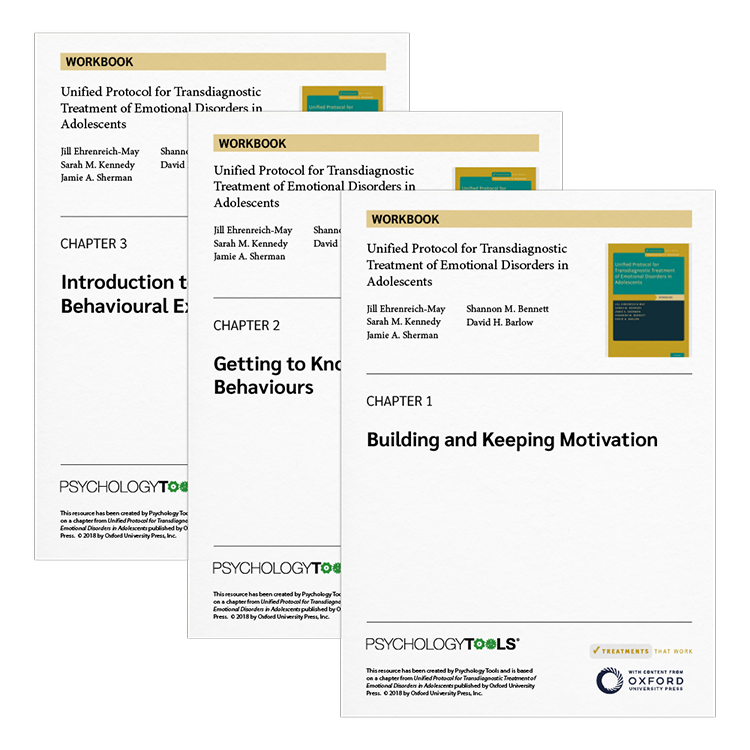
What's inside
- Comprehensive psychoeducation about emotional disorders.
- Effective interventions for achieving long-term improvement.
- Strategies for reducing the risk of relapse.
- Engaging and accessible content written specifically for adolescents.
FAQs
How this resource improves clinical outcomes
By using this workbook, clients benefit from:
- A structured and accessible approach that targets their difficulties.
- Trustworthy guidance and information.
- Effective techniques that enhance progress.
- Tools that support both in-session work and out-of-session practice.
- Lasting improvements and reduced risk of relapse.
Clinicians who use this resource also use
References and further reading
- Barlow, D. H. (2014). The Unified Protocol for Transdiagnostic Treatment of Emotional Disorders: Therapist Guide. Oxford University Press.
- Ehrenreich-May, J., & Chu, B. C. (2013). Transdiagnostic Treatments for Children and Adolescents: Principles and Practice. Guilford Press.
- Kazdin, A. E. (2017). Evidence-Based Psychotherapies for Children and Adolescents. Guilford Press.
- Southam-Gerow, M. A. (2013). Emotion Regulation in Children and Adolescents: A Practitioner's Guide. Guilford Press.
Just enter your name and email address, and we'll send you Unified Protocol For Transdiagnostic Treatment Of Emotional Disorders In Adolescents: Workbook (English US) straight to your inbox. You'll also receive occasional product update emails wth evidence-based tools, clinical resources, and the latest psychological research.
Why Psychology Tools?
Get Support
Sign Up
- © 2025 Psychology Tools. All rights reserved
- Terms & Conditions
- Privacy Policy
- Cookies Policy
- Disclaimer
Working...
We value your privacy
This site uses strictly necessary cookies to function. We do not use cookies for analytics, marketing, or tracking purposes. By clicking “OK”, you agree to the use of these essential cookies. Read our Cookie Policy
